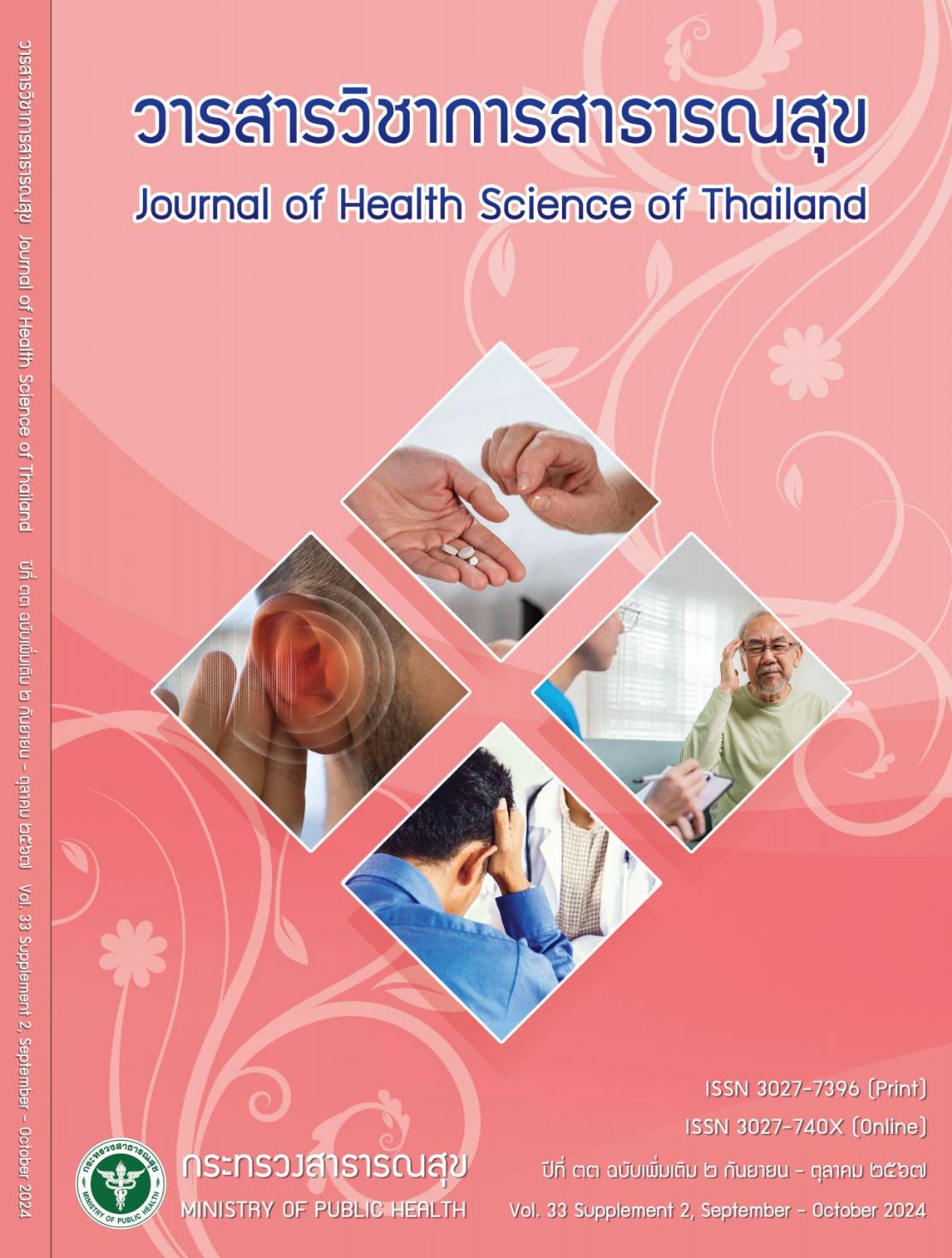Audiometry Surveillance for Workers Who Had a Combination Exposure to Noise and Ototoxicant Chemicals
Keywords:
ototoxicity, hearing loss, noise-induced, audiometryAbstract
Occupational noise-induced hearing loss (NIHL) is one of the most common work-related diseases.
It can be prevented by controlling exposure to workplace noise. Recent studies have revealed that not only
noise, but also chemicals can be toxic to the auditory system called Ototoxicant. Even the noise levels
are within standard limits, hearing loss among workers may occur especially when combined exposure
to ototoxicants due to their synergistic effect. The objective of this study was to explore on the approach
to conduct audiometry surveillance on this matter. A review of literature from various sources revealed a
total of 5 agencies across 4 countries reporting strong evidence of 7 ototoxicants including styrene, toluene,
p-xylene, ethylbenzene, carbon monoxide, hydrogen cyanide, and lead. All of agencies recommend
guidelines for assessing hearing capacity of workers whom exposed to both risk factors by utilizing the
time-weighted average occupational exposure limits (TWA-OELs) of chemical as well as sound pressure
level in evaluation health risk. However, each agency adopted the different TWA-OELs according to their
respective regulations. The findings of this study suggest that health surveillance guidelines can be divided
into three scenarios. Firstly, no surveillance is required when the average 8-hour noise level is less than
80 dBA combined with chemical concentrations in the work environment below 20% OEL. Secondly,
surveillance is required at least every two years when the average 8-hour noise level is equal to or greater
than 80 dBA, or chemical concentrations in the work environment are between 20% - 50% OEL.
Thirdly, annual surveillance is necessary when the average 8-hour noise level is equal to or greater than
80 dBA, combined with chemical concentrations in the work environment between 20% - 50% OEL,
or when chemical concentrations exceed 50% OEL. These assessment values only serve as guidelines.
Workplaces should adopt a suitable TWA-OELs of chemical concentration aligned with acceptable risk
to design health surveillance program for workers who exposed to both factors consistently during work
hours. In this context, complying with TWA-OELs promulgated by the Ministry of Labor regulations is
recommended.
Downloads
Downloads
Published
How to Cite
Issue
Section
License

This work is licensed under a Creative Commons Attribution-NonCommercial-NoDerivatives 4.0 International License.







